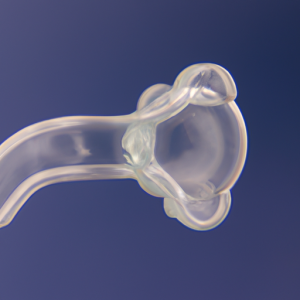Benign diseases of the mammary glands are a common concern among women of all ages. While often overshadowed by the fear of breast cancer, these non-cancerous conditions can still cause discomfort, pain, and anxiety. Understanding the causes, symptoms, and diagnosis of these conditions is crucial for early detection and effective management. This article aims to provide a comprehensive overview of benign diseases of the mammary glands, exploring their causes, symptoms, and diagnosis in the first section. The second section will delve into the various treatment options available, highlighting both medical and non-medical approaches. Finally, the third section will focus on lifestyle management strategies and support systems that can help individuals live with and navigate the challenges posed by these conditions. Whether you have recently been diagnosed or are simply seeking information, this article will serve as a valuable resource in understanding and managing benign diseases of the mammary glands.
1. Understanding Benign Diseases of the Mammary Glands: Causes, Symptoms, and Diagnosis
Benign diseases of the mammary glands refer to non-cancerous conditions that can affect the breast tissue. Although these conditions are not life-threatening, they can cause discomfort and anxiety for women. Understanding the causes, symptoms, and diagnosis of benign diseases of the mammary glands is crucial for early detection and appropriate treatment.
Causes:
The exact causes of benign diseases of the mammary glands are not fully understood. However, certain factors have been identified that may contribute to the development of these conditions. Hormonal imbalances, such as fluctuations in estrogen and progesterone levels, play a significant role. Other factors include genetic predisposition, obesity, environmental factors, and lifestyle choices.
Symptoms:
Benign diseases of the mammary glands may present with a variety of symptoms, depending on the specific condition. Common symptoms include breast pain or tenderness, breast lumps or thickening, nipple discharge, breast swelling, and changes in breast size or shape. Women may also experience nipple inversion, skin changes (such as redness or dimpling), and persistent breast discomfort.
Diagnosis:
Proper diagnosis of benign diseases of the mammary glands involves a comprehensive evaluation of the patient’s medical history, physical examination, and additional diagnostic tests. During the physical exam, the healthcare provider may palpate the breasts to identify any abnormalities or lumps. Diagnostic tests commonly used include mammography, ultrasound, and breast biopsies.
Mammography is a screening tool that uses low-dose X-rays to detect any changes or abnormalities in the breast tissue. It can help identify masses or calcifications that may indicate benign conditions. Ultrasound, on the other hand, utilizes sound waves to create images of the breast tissue, providing more detailed information about the nature of the mass. A breast biopsy, whether through fine-needle aspiration or core needle biopsy, involves extracting a
2. Exploring Treatment Options for Benign Diseases of the Mammary Glands
When it comes to the treatment of benign diseases of the mammary glands, it is essential to consider various factors including the specific condition, severity of symptoms, and the patient’s overall health. The treatment options for benign diseases of the mammary glands can range from conservative management to surgical intervention, depending on the individual case.
1. Conservative Management:
In many cases, where the symptoms are mild or the condition is not causing significant discomfort, conservative management may be the first line of treatment. This approach involves monitoring the condition closely without any immediate medical intervention. Regular check-ups and mammograms may be recommended to ensure that the condition does not progress or cause any complications. Lifestyle modifications, such as wearing a well-fitted supportive bra, maintaining a healthy body weight, and avoiding excessive caffeine intake, may also be advised to alleviate symptoms.
2. Medications:
Certain medications can be prescribed to manage the symptoms associated with benign diseases of the mammary glands. Nonsteroidal anti-inflammatory drugs (NSAIDs), such as ibuprofen or naproxen, can help reduce pain and inflammation. Hormonal therapy, such as oral contraceptives or selective estrogen receptor modulators (SERMs), may be recommended in cases where hormonal imbalances are contributing to the condition.
3. Surgical Intervention:
In some cases, when conservative management and medication fail to provide relief or when there is an increased risk of complications, surgical intervention may be necessary. The specific type of surgery will depend on the diagnosis and the individual’s unique circumstances. Some common surgical procedures for benign diseases of the mammary glands include:
– Lumpectomy: This procedure involves the removal of the abnormal lump or mass while preserving the surrounding healthy tissue.
– Cyst aspiration: If the benign disease presents as a fluid-filled cyst, a needle can be used to drain the fluid, relieving discomfort and reducing the
3. Living with Benign Diseases of the Mammary Glands: Lifestyle Management and Support
Living with benign diseases of the mammary glands can be challenging, but with proper lifestyle management and support, individuals can effectively navigate the impact of these conditions. While benign diseases may not pose a significant threat to overall health, they can still cause discomfort and affect one’s quality of life. Here are some strategies to help manage and cope with these conditions.
First and foremost, it is crucial to maintain regular communication with healthcare professionals. Consistent check-ups and consultations with a knowledgeable physician are essential for monitoring the condition and ensuring timely treatment. These healthcare providers will guide individuals through the necessary diagnostic procedures, such as mammograms, ultrasounds, or biopsies, to accurately diagnose the specific benign disease and establish an appropriate treatment plan.
Understanding the symptoms and causes of the specific benign disease is equally important. Knowledge empowers individuals to recognize any changes or developments in their condition and seek immediate medical attention when necessary. By staying informed, individuals can actively participate in their own care and make informed decisions regarding their treatment options.
Lifestyle modifications can play a significant role in managing benign diseases of the mammary glands. Maintaining a healthy weight through regular exercise and a balanced diet is crucial, as excess body fat can contribute to hormonal imbalances that may worsen the condition. Regular physical activity not only helps maintain weight but also improves overall well-being, reduces stress, and boosts the immune system.
Support groups can provide invaluable assistance to individuals living with benign diseases of the mammary glands. Sharing experiences, concerns, and emotions with others who are going through similar challenges can be comforting and empowering. Support groups offer a safe space for individuals to discuss their fears, anxieties, and questions, while also providing practical advice and emotional support. These groups can be found in local communities, hospitals, or online platforms.
Psychological well-being should not be overlooked when managing benign diseases of the

